Why Do Hundreds of Macaws Gather at These Peruvian Clay Banks?
Brightly colored parrots of the western Amazon basin display a behavior not seen anywhere else
Along exposed river banks in the western Amazon basin, within the borders of Peru, macaws and other parrots in rainbow hues flock by the hundreds. They come to gather clay that they’ll later eat in nearby trees. It’s a dazzling sight for human onlookers, but it’s been a bit of a mystery for science. Why would various types of macaws and other parrots want to gorge on clay when normally they eat plant matter?
At first, studies hinted that the clay might help remove toxins, such as naturally occurring tannins, that the birds ingest from plants. When animals in general consume clay, it can help neutralize such toxins through the process of adsorption, in which the clay binds to the tannins before the gastrointestinal tract can absorb them. The toxins then get excreted alongside the clay. (Some humans also eat or drink clay to combat stomach problems and other issues, and many pharmacies around the world sell activated charcoal, another adsorbant that can bind with toxins or drugs to prevent them from being gastrointestinally absorbed.)
But more recently, as Wired reports, studies show that the birds in Peru may be “using the reddish-brown muck to help augment a sodium-poor diet.” Donald Brightsmith, who directs the Tambopata Macaw Project in the lowlands of southeastern Peru, points out that parrots in other regions around the globe consume foods that contain toxins, including those with tannins, and yet it’s only those in the western Amazon basin who visit these clay banks, also called salt licks or clay licks. Brightsmith argues that there’s a connection between this clay-eating and the fact that the western Amazon basin is lacking in salt. As a paper in the Proceedings of the National Academy of Sciences explains, sodium supply varies by region. The farther an area is from the ocean, the more its rain may lack salt. Plus, in inland areas with high rainfall, sodium may leach out of the soil. So Brightsmith and his research team, Wired explains, are testing the importance of salt intake in the overall health of macaws.
Brightsmith’s team has studied the local population of large macaws during an unstable time for the birds. As the Tambopata Macaw Project explains on its site, large macaws drastically decreased their use of the clay licks in 2009, possibly due to changes in vegetation and soil conditions. In early 2010, the team joined forces with the Peruvian government in an attempt to manage the clay banks and help restore the birds’ usage. The birds face other ecological concerns, too, including “imminent threat from the paving of a highway through one of the planet’s most biodiverse regions.”
Several areas in Peru provide tourists an especially good view of the birds and their clay banks, including Tambopata National Reserve in southeastern Peru, along the same Tambopata river where Brightsmith does his work. Tambopata, according to the Macaw Project, has the “the highest concentration of avian clay licks in the world.”
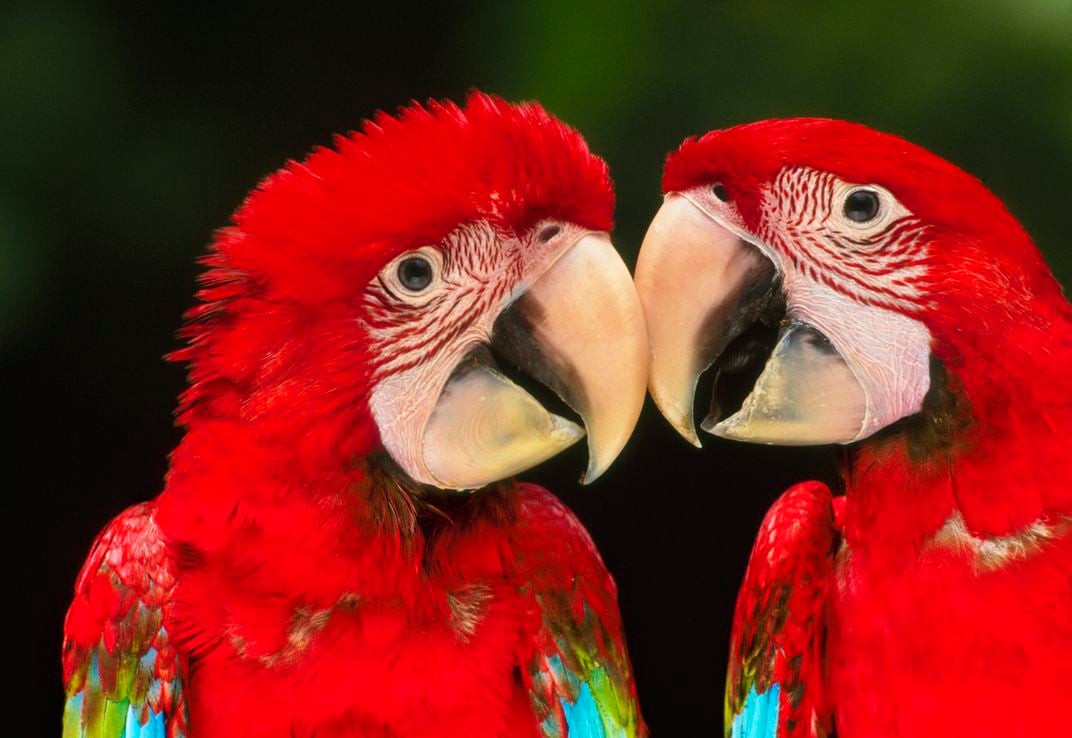
Another good place to spy the birds feasting on clay licks is at Manú National Park and Biosphere Reserve, a World Heritage site that Unesco calls the most biologically diverse place on Earth. Manú boasts “more than 800 bird species and 200 species of mammals” that scientists have identified, including six species of macaw.
Still, as majestic as Manú is, Tambopata may be more tourist-friendly. As the Macaw Project writes, there are several options for visitors to the Tambopata area, including the Tambopata Research Center lodge, which is just 500 yards from the largest-known macaw clay lick in the Amazon.
Even better, guests at the lodge can often accompany researchers as they work with macaw chicks—little ones who’ll soon sprout rainbow feathers of their own.
/https://tf-cmsv2-smithsonianmag-media.s3.amazonaws.com/accounts/headshot/michele-lent-hirsch.jpg)
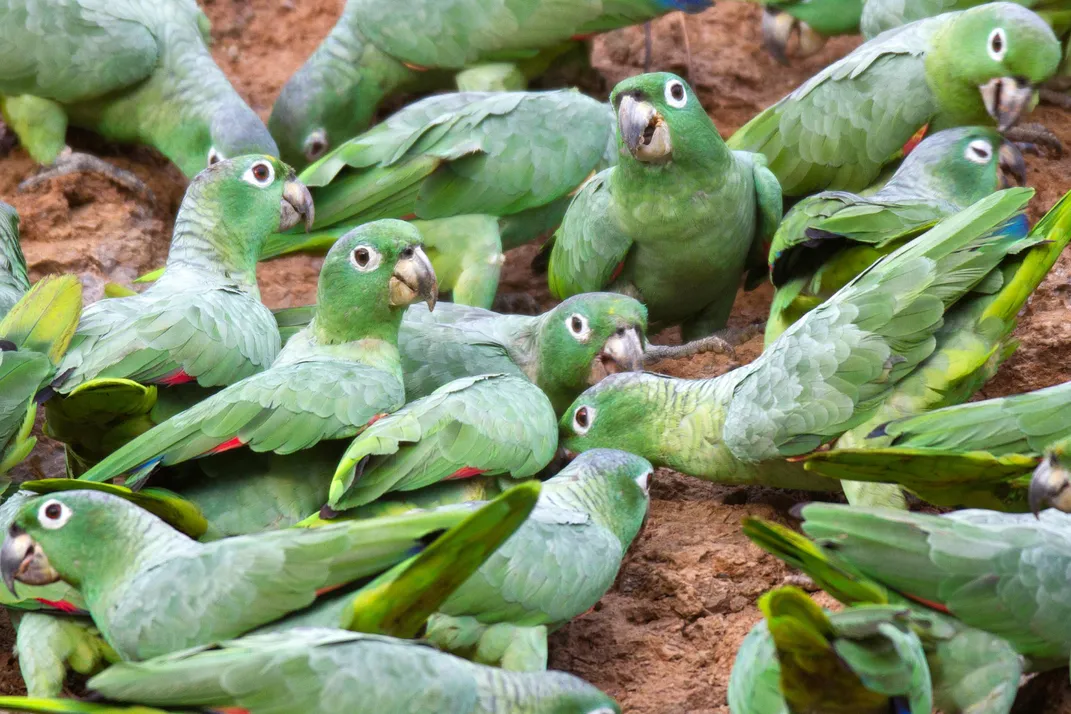
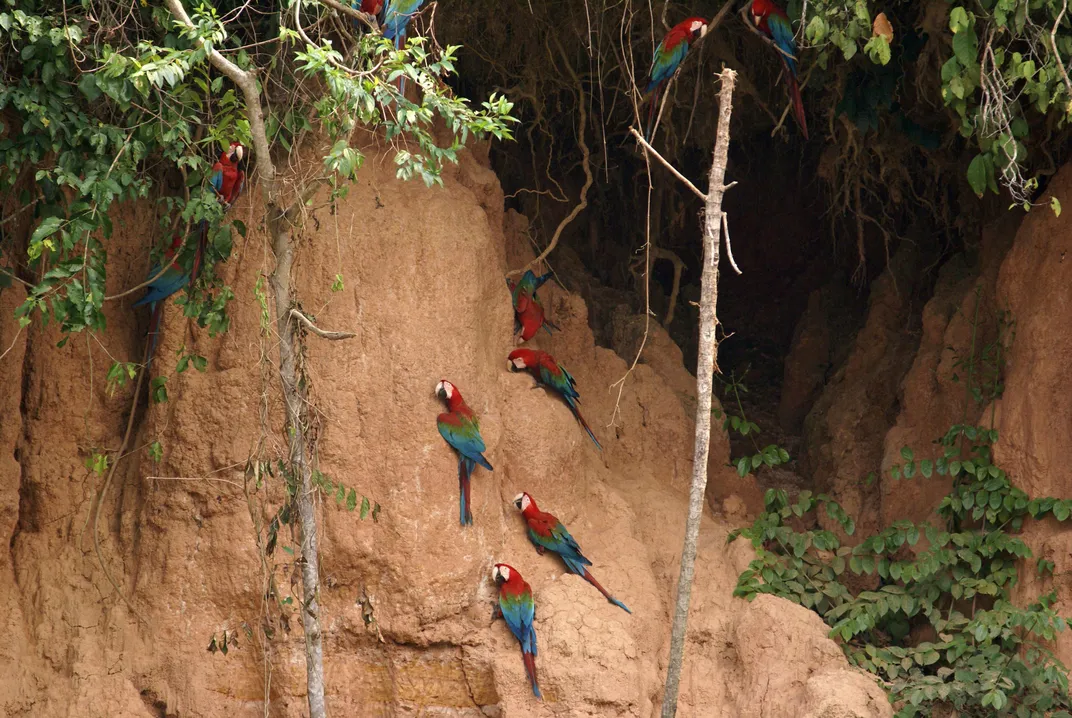
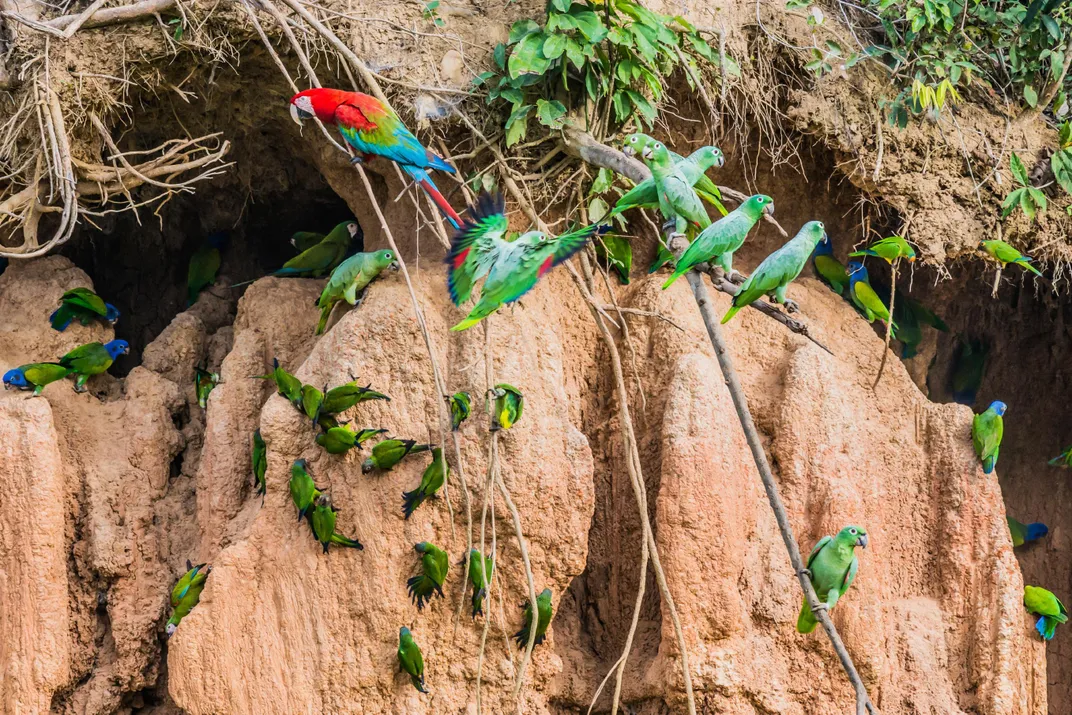
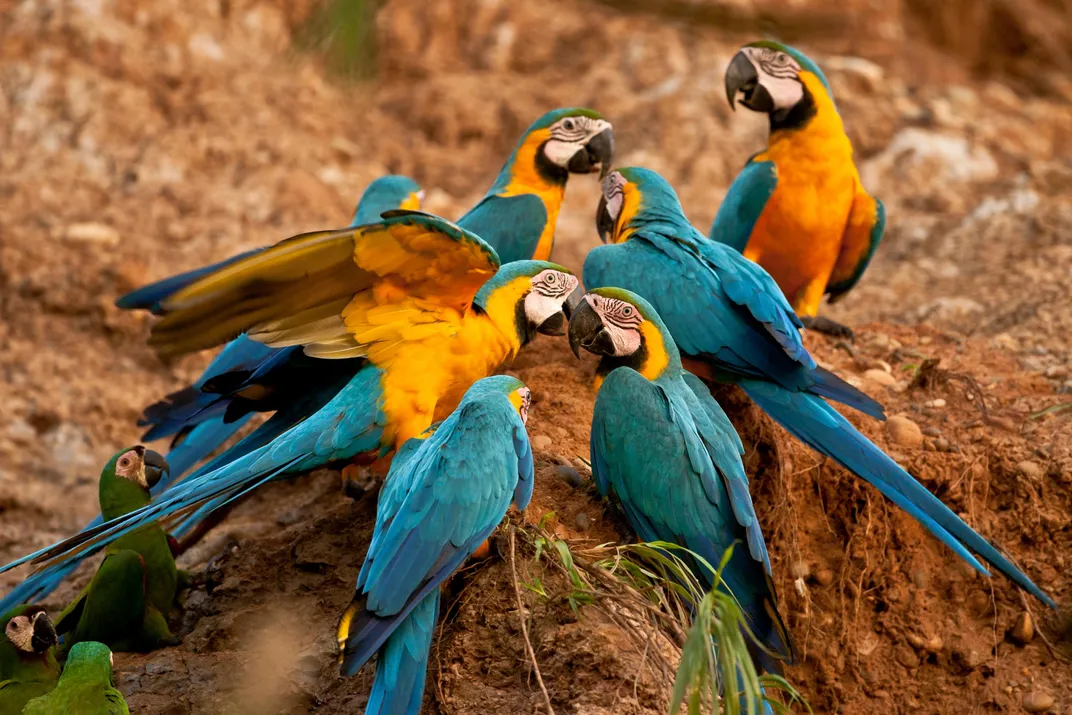
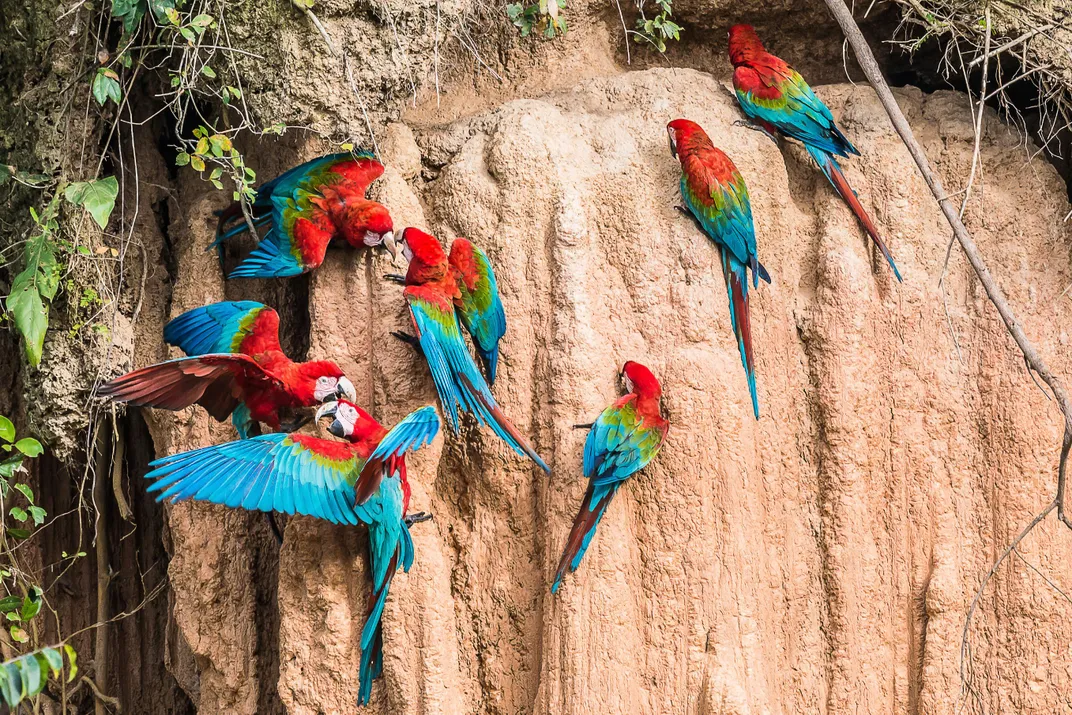
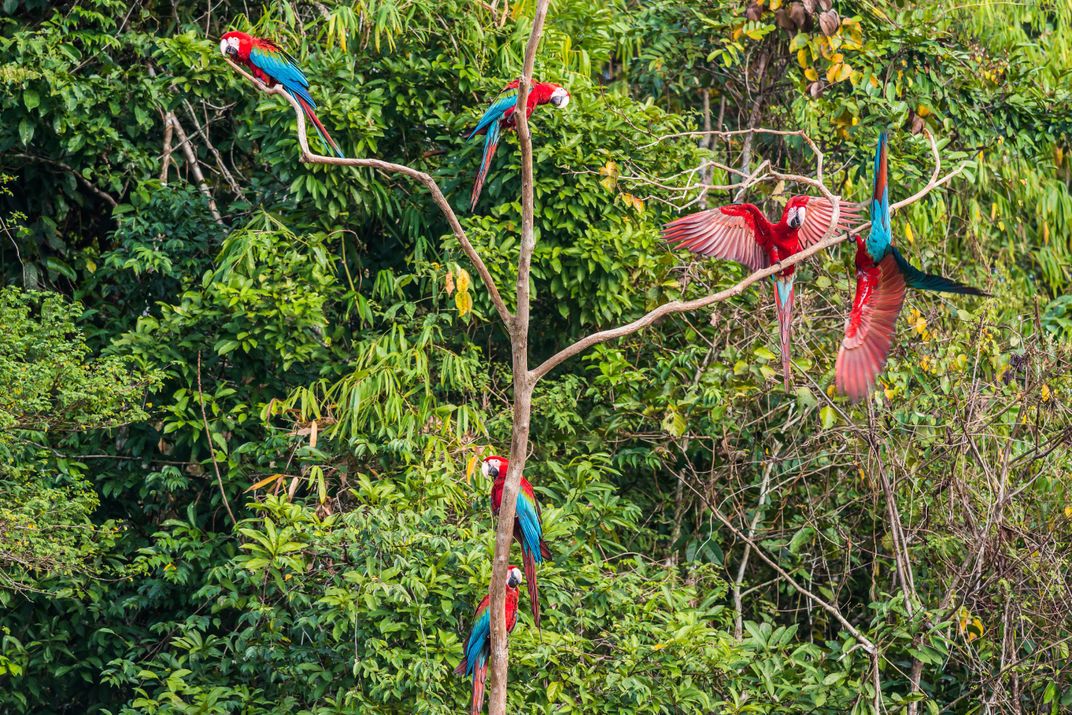

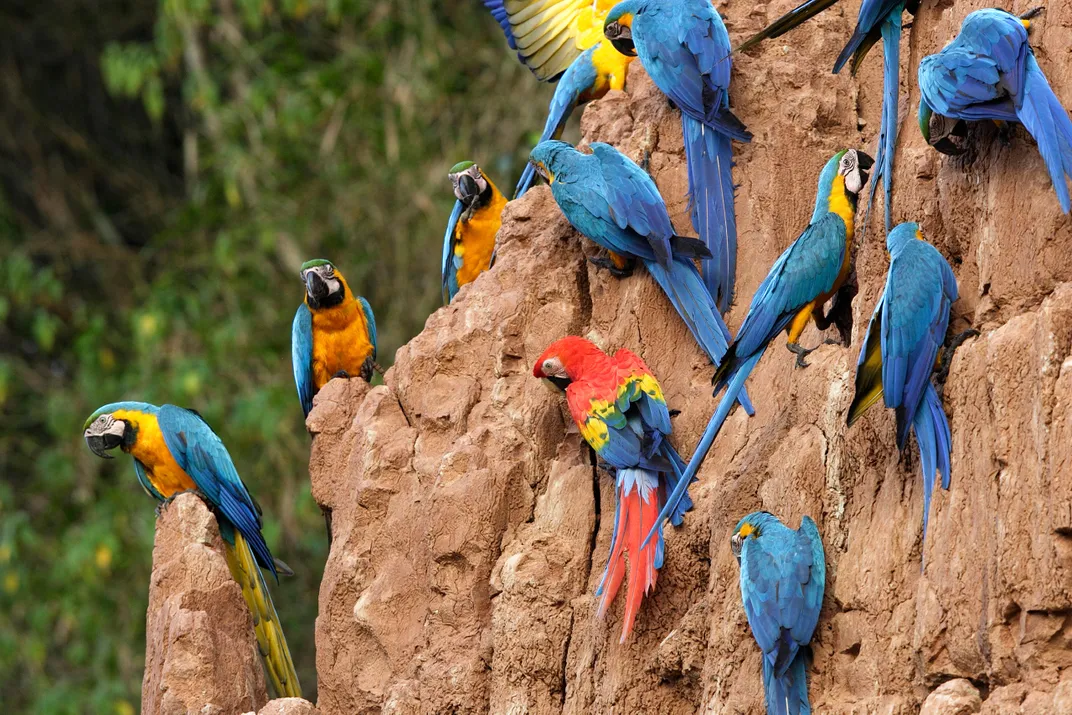
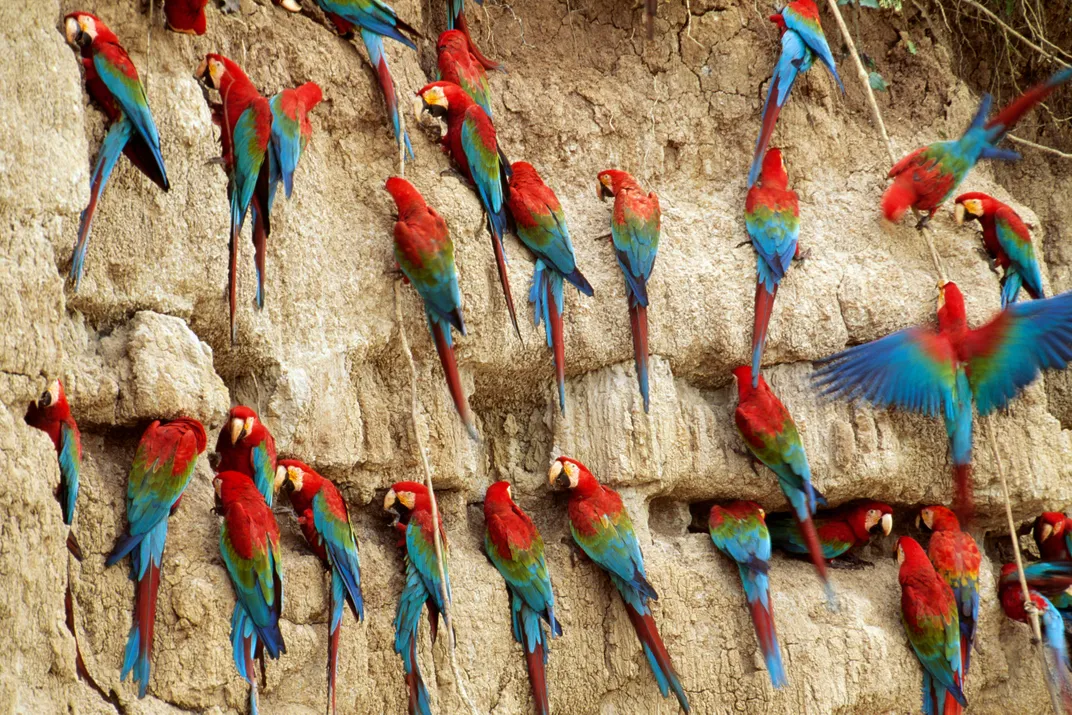
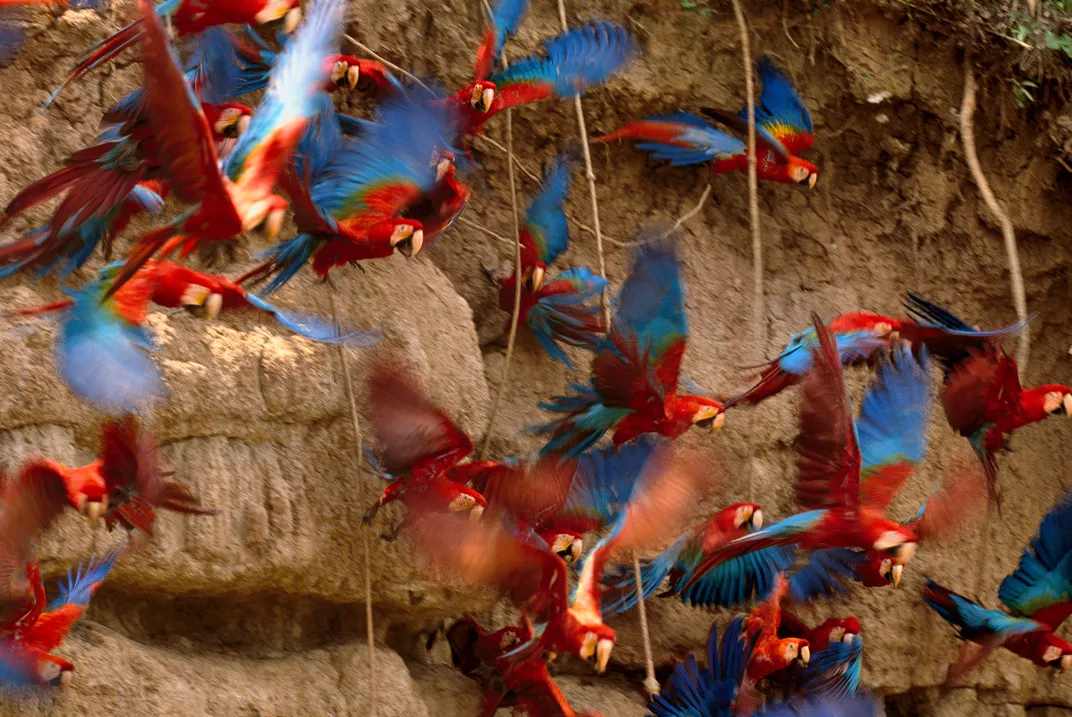
/https://tf-cmsv2-smithsonianmag-media.s3.amazonaws.com/accounts/headshot/michele-lent-hirsch.jpg)